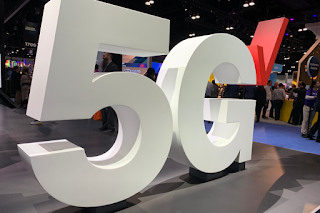Nokia introduced a new Network Operating System (NOS) and a declarative, intent-based automation and operations toolkit that were co-developed with leading global webscale companies, including Apple, who is deploying the technology at its data centers.
 Nokia SR Linux is a microservices-based NOS. It inherits Nokia’s time-proven Internet protocols from the service router operating system (SROS) currently in use by the huge installed base of Nokia carrier-grade routers. The new NOS is paired with a new SR Linux NDK (NetOps development kit), which exposes programming capabilities. Applications are integrated via gRPC (remote procedure call) and protobuf, with no recompiling, language limitations or dependencies.
Nokia SR Linux is a microservices-based NOS. It inherits Nokia’s time-proven Internet protocols from the service router operating system (SROS) currently in use by the huge installed base of Nokia carrier-grade routers. The new NOS is paired with a new SR Linux NDK (NetOps development kit), which exposes programming capabilities. Applications are integrated via gRPC (remote procedure call) and protobuf, with no recompiling, language limitations or dependencies.
The new intent-based automation and operations toolkit, called Nokia Fabric Service Platform (FSP), was designed to build, deploy and monitor the entire data center network with powerful network level constructs. The FSP includes technologies that were only available to the largest cloud builders, such as a real-time state-correct virtual digital twin for validation and troubleshooting.
Nokia describes SR Linux as the industry’s first flexible and open network application development environment.
Basil Alwan, President of IP and Optical Networks at Nokia, said: “With decades of experience serving the world’s telecom operators, we understand the engineering challenges of building and operating business and mission-critical IP networks on a global scale. However, today’s massive data centers have their own unique operational challenges. The SR Linux project was the proverbial ’clean-sheet’ rethink, drawing from our partnership with Apple and others. The resulting design is impressive in its depth and strikes the needed balance for the future.”
Other customers quoted in the NOS announcement include BT, LINX, Equinix, team.blue and Turkcell.
Nokia's data center and cloud networking hardware portfolio includes the Nokia 7250 Interconnect Router (IXR), Nokia 7220 IXR-H series and Nokia 7220 IXR-D series platforms, which offer a broad range of high-performance chassis-based and fixed-form-factor options for data center top of rack (TOR), leaf, spine and super-spine applications. The platforms support 400GE, 100GE, 50GE, 40GE, 25GE, 10GE and 1GE interfaces and deliver a robust and comprehensive set of capabilities spanning IP routing, layer two switching, QoS, scalable telemetry, security and model-driven management.
https://www.nokia.com/networks/dc-fabric/
 Nokia SR Linux is a microservices-based NOS. It inherits Nokia’s time-proven Internet protocols from the service router operating system (SROS) currently in use by the huge installed base of Nokia carrier-grade routers. The new NOS is paired with a new SR Linux NDK (NetOps development kit), which exposes programming capabilities. Applications are integrated via gRPC (remote procedure call) and protobuf, with no recompiling, language limitations or dependencies.
Nokia SR Linux is a microservices-based NOS. It inherits Nokia’s time-proven Internet protocols from the service router operating system (SROS) currently in use by the huge installed base of Nokia carrier-grade routers. The new NOS is paired with a new SR Linux NDK (NetOps development kit), which exposes programming capabilities. Applications are integrated via gRPC (remote procedure call) and protobuf, with no recompiling, language limitations or dependencies.The new intent-based automation and operations toolkit, called Nokia Fabric Service Platform (FSP), was designed to build, deploy and monitor the entire data center network with powerful network level constructs. The FSP includes technologies that were only available to the largest cloud builders, such as a real-time state-correct virtual digital twin for validation and troubleshooting.
Nokia describes SR Linux as the industry’s first flexible and open network application development environment.
Basil Alwan, President of IP and Optical Networks at Nokia, said: “With decades of experience serving the world’s telecom operators, we understand the engineering challenges of building and operating business and mission-critical IP networks on a global scale. However, today’s massive data centers have their own unique operational challenges. The SR Linux project was the proverbial ’clean-sheet’ rethink, drawing from our partnership with Apple and others. The resulting design is impressive in its depth and strikes the needed balance for the future.”
Other customers quoted in the NOS announcement include BT, LINX, Equinix, team.blue and Turkcell.
Nokia's data center and cloud networking hardware portfolio includes the Nokia 7250 Interconnect Router (IXR), Nokia 7220 IXR-H series and Nokia 7220 IXR-D series platforms, which offer a broad range of high-performance chassis-based and fixed-form-factor options for data center top of rack (TOR), leaf, spine and super-spine applications. The platforms support 400GE, 100GE, 50GE, 40GE, 25GE, 10GE and 1GE interfaces and deliver a robust and comprehensive set of capabilities spanning IP routing, layer two switching, QoS, scalable telemetry, security and model-driven management.
https://www.nokia.com/networks/dc-fabric/
















